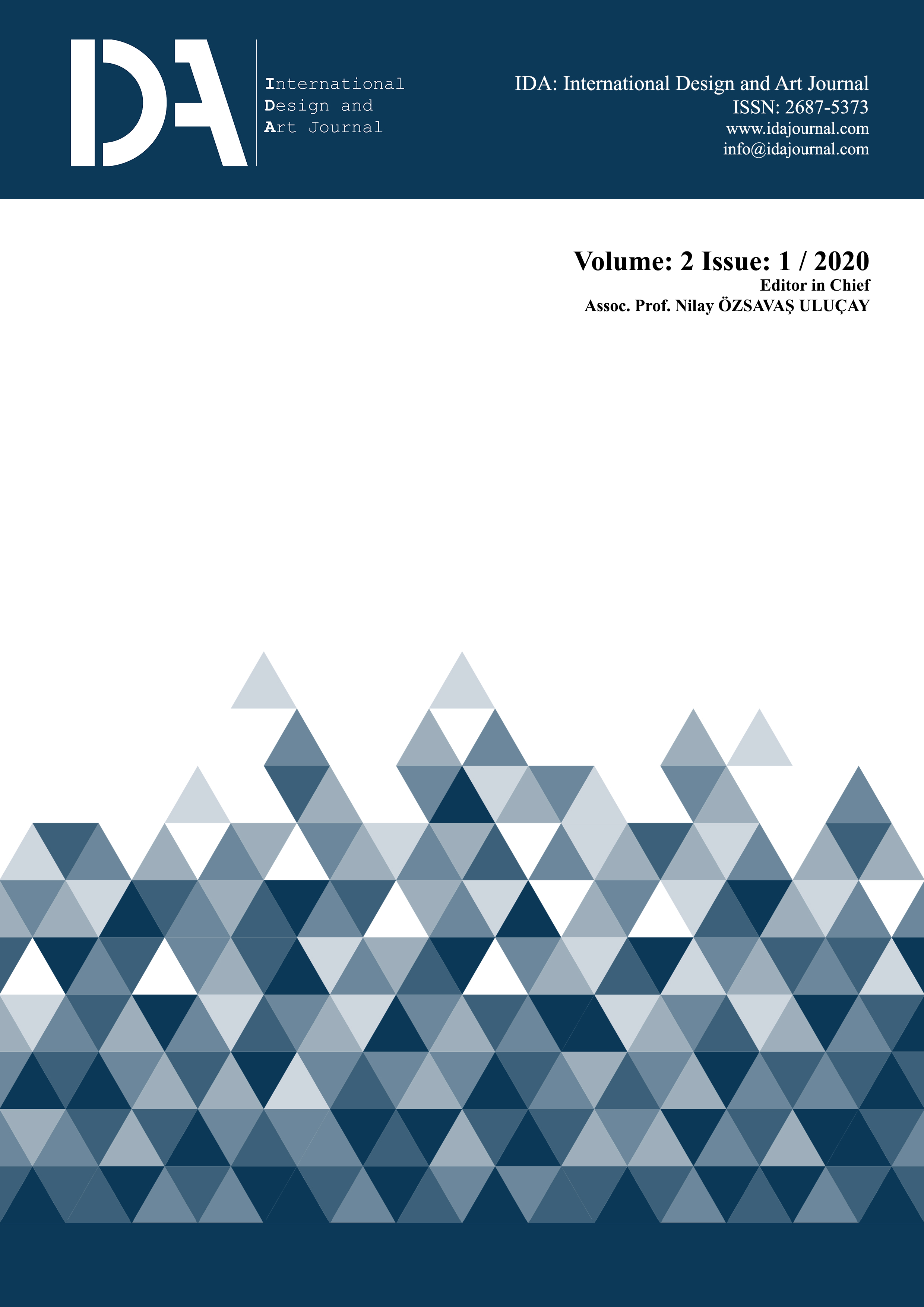Interior Design in Eco-Tech City Model
Keywords:
Eco-Tech Cities, Eco-Tech Space Design, Eco-TechnologiesAbstract
The eco-tech design concept, which is a combination of ecology and technology concepts, was born as a need because today's design strategies cannot bring a space-scale solution to environmental problems. It draws attention to the awareness of environmental problems and the relationships between the structural area and the natural environment. The concept of eco-tech refers to the best preservation of ecology with the help of technological tools. In order to ensure a sustainable life by considering ecology and technology together, it is based on natural elements, natural processes, and advocates that technology should be used to protect nature. The aim of the study is to bring together ecology and technology centered design under the same title. In this context, the eco-tech city model, which has a city-scale counterpart, was examined and an overview of eco-tech spaces was developed. The answer to the study is the question “How do they design a space without choosing between ecology and technology in the space design that will develop in the eco-tech city model?” It is the question. The buildings and interiors designed within this scope are energy efficient, ecologically sensitive and contain many technology systems. Within the scope of the article produced from the master thesis, the concept of eco-tech, which constitutes the design concept of the future, has been handled in the space scale. In this process, eco-tech cities have guided the formation of the general framework of the concept. As a result of the literature review, an overview of the concept of eco-tech was created and four technology systems used within the scope of this concept were discussed. Contribution of environment, information, communication and geographic information technologies to design has been evaluated in an ecological dimension. In order to evaluate the concept on a spatial scale, five samples selected from different regions of the world were analyzed in accordance with the concept of eco-tech. The interior features that can be created within the scope of the eco-tech concept are examined through examples. As a result, an overview of the concept has been created and the eco-tech design process has been handled under six main topics. The process, sociological factors, regional data, eco-technologies, smart systems and material titles define the process of the concept of eco-tech. The conceptual process was evaluated on the scale of the interior and eight items were created for interior spaces to have an eco-tech feature. These substances determine the quality and functions of the interiors of the future. The concept of eco-tech contributes to the environmental problems and resource problems sought in the world on a scale of structure and interior space.
References
Abdollahi, M. (2016). The Impact of Sustainable Development on Eco-Tech Architecture. Bulletin de la Société Royale des Sciences de Liège. İran. Vol. 85, 1371-1377. https://popups.uliege.be/0037-9565/index.php?id=6110&file=1 (09.09.2019)
Avcı Architects. https://avciarchitects.com/tr/proje/tmb-merkez-binasi/ (05.12.2019)
Bogunovich, D. (2002). Eco-tech Cities: Smart Metabolism for a Green Urbanism. Brebbia C.A.(ED). The Sustainable City II. Martin-Duque&L.C. Wasdhwa. S. 75-84. London: Witpress.
Bookchin, M. (1980). Ekolojik Bir Topluma Doğru (Toward an Ecological Society). İstanbul: Sümer Yayıncılık.
Enric Ruiz Geli Team. https://www.ruiz-geli.com/projects/built/media-tic (05.12.2019)
Ercoşkun, Ö. Karaaslan, Ş. (2009). Geleceğin Ekolojik ve Teknolojik Kentleri, Megaron YTÜ Mim. Fak. E-Dergisi. İstanbul. 3(3), 283-296. http://www.journalagent.com/megaron/pdfs/MEGARON-30932-ARTICLE-YALCINER_ERCOSKUN.pdf (21.07.2019)
Hugh Broughton Architects. https://hbarchitects.co.uk/halley-vi-british-antarctic-research-station/ (05.12.2019)
Iranmanesh, L., Nakhaine, H. (2011). Study of the Roles of Eco-tech Architecture in Development of Tourism Industry. 2nd International Conference on Business, Economic and Tourism Management. Singapore. Vol.24, 61-66. http://www.ipedr.com/vol24/13-CBETM2011-M10015.pdf (14.10.2019)
Mozhdegani, A. S., Afhami, A. (2017). Using Ecotech Architecture as an Effective Tool for Sustainability in Construction Industry. Engineering,Technology & Applied Science Research. Iran. Vol.7, 1914-1917.https://pdfs.semanticscholar.org/3d1f/b15e84fa842fba58706f7eb8dabacb4d0f4d.pdf (22.09.2019)
Nazarian, T. (2015). The Common Language of Sustainable Architecture in Creating New Architectural Spaces, International Journal of Science, Technology and Society. İran. Vol.3, No.2-1, 47-51. https://www.researchgate.net/publication/316299092_The_Common_Language_of_Sustainable_Architecture_in_Creating_New_Architectural_Spaces (09.09.2019)
Snohetta. https://snohetta.com/projects/366-svart# (05.12.2019)
SOM. https://www.som.com/projects/the_kathleen_grimm_school (05.12.2019)
Yeang, K. (2012). Ekotasarım Ekolojik Tasarım Rehberi. İstanbul: YEM Yayınları.
Yıldız, P. (2014). İç Mimarlıkta ‘Yapay Zekâ’ ve Türkiye’den Seçilmiş Örneklerin Mekân Tasarımı Yönünden Kapsamlı Analizi Çalışması. Ankara: Hacettepe Üniversitesi Yayınları.
Zandieh, M., Nikkhah, A. (2015). Architecture of Buildings Using Renewable Energies in Harmony with Sustainable Development. Jurnal UMP Social Sciences and Technology Management. Vol.3 Issue.2, 27-33. https://pdfs.semanticscholar.org/1e72/fb2be9dc84bd7b98df2744674328774e364b.pdf (10.05.2019)
Downloads
Published
Issue
Section
License
IDA: International Design and Art Journal is an open-access academic journal. All publishing rights of the accepted articles are deemed to assign to IDA: International Design and Art Journal. Articles can not be published and copied anywhere, and can not be used without reference.
IDA: International Design and Art Journal is licensed under a Creative Commons Attribution-NonCommercial-ShareAlike 4.0 International License.



